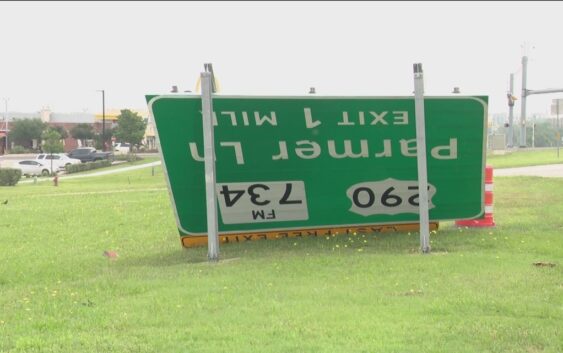- Austin adopts new map that greatly expands area at risk of wildfire
- CenterPoint Energy accelerates infrastructure improvements ahead of hurricane season
- Carolina Hurricanes playoff tickets go on sale Thursday
- Ask the Meteorologist: Why do tornadoes target Tornado Alley, Dixie Alley?
- Nonprofit closes distribution site that aided thousands after Hurricane Helene
Weekend storm damage caused by two confirmed tornadoes in Central Texas

Tornado activity is common in Texas this time of year, but “decaying” El Niño can also be to blame.
MANOR, Texas — Some Texans are still picking up the pieces after severe storms led to two confirmed tornadoes over the weekend.
Sunday morning started with an EF-1 tornado ripping through parts of Manor and the ShawdowGlen area for nearly five miles, according to the National Weather Service (NWS).
Officials said the tornado had estimated peak winds of 110 miles per hour as it moved from the area near U.S. Highway 290 and State Highway 130 through parts of Manor. The NWS said the damage along 290 came from an EF-0 tornado before it peaked and weakened again.
A few hours later, an EF-0 tornado then briefly touched down in Burlington, which is in Milam County. It was one of four tornadoes the area saw within an hour. While the damage was minor, some Milam County roads remain closed following Sunday’s storms, according to the sheriff’s office.
Did Milam County see a Tornado Warning?
Even though the NWS issued a Tornado Warning for Milam County on Sunday, the warning came after the tornado touched down and dissipated.
According to the NWS, the reason a Tornado Warning wasn’t issued for the confirmed tornado was because “circulation was weak and difficult to detect.”
Did a tornado hit South Austin?
After looking into damage in Manor, the NWS also visited South Austin, including Garrison Park, following reports of damage.
The NWS said at this time, there is no evidence the damage came from tornadoes, but that they will continue to search for videos and images that could indicate otherwise.
What El Niño has to do with tornado weather
El Niño is a naturally occurring cyclical climate phenomenon that affects both the oceans and the atmosphere.
In late 2023 and early 2024, much of the world experienced above-average temperatures, likely linked to global climate change and exacerbated by El Niño. When El Niño decays, the atmospheric waves change and can become wavier, so they have a greater amplitude. That tends to enhance the conditions needed for tornadoes.
The U.S. often sees more frequent tornadoes when the climate is transitioning out of El Niño. The strong El Niño of 2023-24 was decaying in April 2024, and forecasters expect it to be gone by summer.